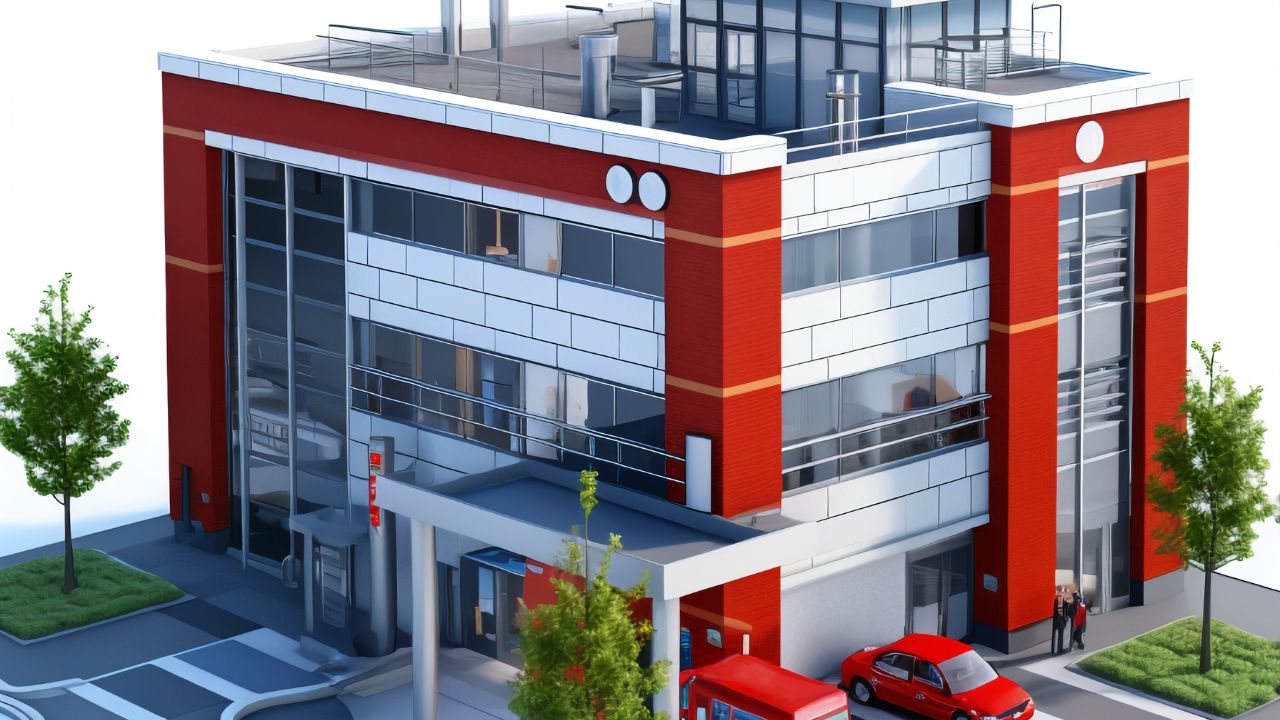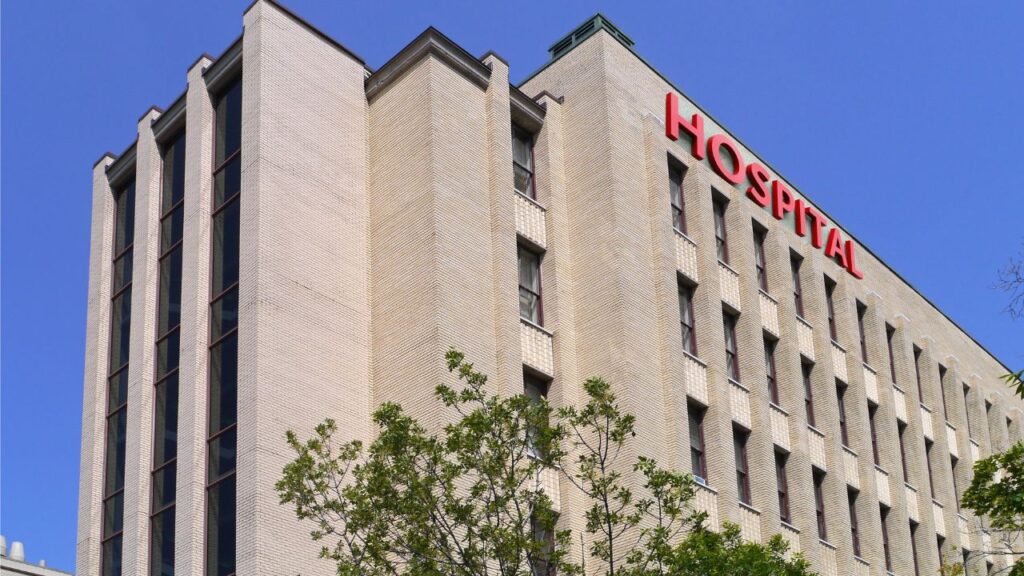Bid Strong, Bid Smart – Try Our Hospital Construction Cost Estimating Service!
- Accurancy
- Efficiency
- Transparency
- Customization
- Time Saving
- Professionalism
- Cost Control

Hospital construction is a monumental undertaking, and the foundation is a critical component that forms the bedrock of the entire structure. The choice of the foundation material, particularly concrete, is pivotal for ensuring the stability, safety, and longevity of the healthcare facility.
In this article, we will delve into the various aspects that influence concrete foundation costs in hospital construction, providing insights for project managers, architects, and stakeholders.

The foundation of a hospital serves as the anchor, supporting the weight of the entire structure, including the sophisticated medical equipment, patients, and personnel. Concrete, renowned for its strength and durability, is often the material of choice for hospital foundations. The importance of a robust foundation cannot be overstated, as it not only ensures the structural integrity of the building but also plays a crucial role in meeting stringent safety and regulatory standards in the healthcare industry.

Fully Insured License
Hire Contractor For Hospital Construction

Make Informed Design Decisions Showcase Your Design Ideas
Get RenderingThe selection of the foundation type is a critical decision that significantly influences the overall cost of hospital construction. Hospitals may opt for slab foundations, crawl space foundations, or full basements, each catering to specific needs and structural requirements. The choice is guided by factors such as the hospital’s functional needs, soil conditions at the construction site, and adherence to local building codes. A thorough evaluation of these considerations ensures that the selected foundation type aligns with the hospital’s design and operational requirements while managing costs effectively.
Site preparation lays the groundwork for a robust foundation, necessitating meticulous planning and execution. Costs associated with site preparation encompass excavation, grading, and ensuring that the construction site is not only level but also properly compacted. Soil testing becomes a crucial step in this phase, allowing engineers to assess the bearing capacity of the soil. This information is vital in determining the most suitable foundation type for the hospital. Investing in thorough site preparation is an essential upfront expense that contributes to the long-term stability and durability of the foundation.
The unique structural demands of hospitals require a comprehensive approach to foundation design and engineering. Beyond the standard considerations, factors such as seismic considerations, load-bearing capacity, and environmental conditions come into play. The complexity of these requirements can contribute to increased costs in terms of specialized expertise, technology, and materials. However, this investment ensures that the foundation is tailor-made to withstand the specific challenges posed by hospital infrastructure, contributing to the safety and resilience of the entire structure.
The quality of the concrete mix and the level of reinforcement directly impact the strength and durability of the foundation. Hospitals, with their substantial load-bearing demands, often require higher strength concrete mixes and additional reinforcement. While these enhancements contribute to increased material costs, they are essential for meeting the structural requirements of the healthcare facility. Investing in a superior concrete mix and appropriate reinforcement is a proactive measure that safeguards the foundation against potential challenges and ensures its longevity.

The location and accessibility of the construction site play a crucial role in determining logistics and transportation costs associated with concrete delivery. Construction sites that are remote or face logistical challenges may incur additional expenses for transporting concrete. Strategic decisions regarding the choice of batching plants and transportation routes can mitigate these costs. Understanding and optimizing accessibility contribute to overall cost-efficiency in the delivery of concrete, ensuring a seamless construction process for the hospital foundation.
Hospitals, as critical infrastructure, must adhere to stringent regulatory standards encompassing environmental regulations and safety codes. Achieving and maintaining compliance with these standards may necessitate additional measures and inspections, contributing to overall construction costs. However, ensuring regulatory adherence is non-negotiable for healthcare facilities, as it guarantees the safety of occupants, environmental sustainability, and compliance with legal requirements. The incorporation of these measures into the construction plan reflects a commitment to responsible and ethical construction practices in the healthcare sector.

Value engineering is a systematic and collaborative approach aimed at optimizing the overall project value by scrutinizing design and construction elements. In the context of hospital foundation construction, this practice involves a detailed examination of every aspect to identify potential cost-saving opportunities without compromising structural integrity. Through careful analysis, stakeholders can streamline processes, explore alternative materials, and make informed decisions that maximize efficiency while minimizing unnecessary expenses. This method ensures that the foundation is not only cost-effective but also meets the highest standards of quality and safety, aligning with the specific needs of healthcare infrastructure.
Local material sourcing is a strategic initiative that focuses on procuring construction materials from nearby suppliers to minimize transportation costs. In the context of hospital foundation construction, using locally available aggregates and concrete materials not only reduces expenses but also contributes to environmental sustainability. By minimizing the distance materials need to travel, the carbon footprint associated with transportation is significantly lowered. This practice aligns with broader environmental considerations while simultaneously providing a cost-effective solution for the construction project, emphasizing the importance of balancing economic and ecological aspects in the decision-making process.
Collaborating closely with structural engineers during the foundation design phase is crucial for achieving a cost-effective yet structurally sound solution. By engaging in a collaborative process, stakeholders can ensure that the foundation meets the specific requirements of the hospital while optimizing costs. Advanced modeling and analysis tools play a key role in this, allowing for a precise and efficient design that factors in load-bearing capacities, seismic considerations, and other critical parameters. The result is a foundation that not only aligns with budgetary constraints but also lays the groundwork for a resilient and enduring healthcare infrastructure.

A thorough site analysis is a fundamental step in the early stages of hospital foundation construction. This process involves a detailed examination of soil conditions and potential challenges specific to the construction site. Understanding the intricacies of the site informs crucial decisions related to the choice of foundation type, helping to minimize unexpected costs during the construction phase. By identifying and addressing potential challenges proactively, stakeholders can develop a foundation plan that not only meets the unique demands of the site but also avoids costly surprises that may arise from inadequate site understanding.
Exploring alternative foundation systems presents an opportunity to achieve cost savings while maintaining efficiency and structural integrity. Systems such as post-tensioned slabs or helical pile foundations offer innovative alternatives to traditional approaches. These alternatives are designed to meet the specific needs of the hospital while potentially reducing construction costs. The exploration of such alternatives requires a collaborative effort between architects, engineers, and construction professionals to ensure that the chosen system aligns with project goals, emphasizing the importance of considering innovative solutions to optimize costs.
Implementing efficient construction practices is paramount for optimizing labor and equipment usage during hospital foundation construction. This involves the adoption of modern construction equipment, adherence to lean construction principles, and the development of effective project scheduling strategies. By optimizing labor and equipment usage, stakeholders can not only reduce construction costs but also enhance overall project efficiency. The efficient use of resources contributes to timely project completion, minimizing downtime and associated expenses, underscoring the significance of incorporating best practices to achieve both cost-effectiveness and operational efficiency.
The integration of construction technologies, such as Building Information Modeling (BIM) and construction management software, plays a transformative role in enhancing project efficiency. In the context of hospital foundation construction, leveraging these tools facilitates improved communication, reduces errors, and contributes to better project management. The seamless flow of information afforded by technology integration allows for real-time collaboration among project stakeholders, leading to informed decision-making and, consequently, cost savings. This emphasis on leveraging technological advancements underscores the evolving nature of construction practices and the importance of embracing innovation for enhanced project outcomes.
Considering the long-term costs associated with the foundation is a strategic approach that extends beyond the construction phase. Lifecycle cost analysis involves evaluating not only the initial construction costs but also ongoing expenses related to maintenance and potential modifications.
By taking a comprehensive view of the foundation’s lifecycle costs, stakeholders can make informed decisions that provide sustained savings over the hospital’s lifespan.

This approach encourages a forward-thinking mindset, emphasizing the importance of investing in a foundation that not only meets immediate budgetary considerations but also proves to be a cost-effective and enduring asset for the healthcare facility.
The concrete foundation cost for hospitals can vary widely based on several factors, including the type of foundation, site conditions, design complexity, and local construction costs. It’s important to note that the figures provided here are general estimates, and actual costs can vary based on specific project requirements. Additionally, these estimates may change over time due to fluctuations in material prices and other market conditions:

Fully Insured License
Hire Contractor For Hospital Construction

Make Informed Design Decisions Showcase Your Design Ideas
Get RenderingThese estimates are for the concrete foundation alone and do not include other associated costs such as site preparation, engineering, labor, or permits. For a more accurate estimate tailored to a specific hospital construction project, it’s recommended to consult with construction professionals or use construction cost estimation services that consider up-to-date and localized data.
In conclusion, the concrete foundation is a pivotal element in hospital construction, ensuring stability and safety. Factors influencing costs include the foundation type, site preparation, design complexity, and compliance with regulations. Cost-saving strategies encompass value engineering, local material sourcing, optimized design, thorough site analysis, alternative systems, efficient construction practices, technology integration, and lifecycle cost analysis. Estimated costs for different foundation types range from $5 to $27 per square foot, with variations based on specific project requirements. For precise estimates, consulting construction professionals is advised, considering the evolving nature of construction practices and market conditions.
The selection of a foundation type is influenced by factors such as soil conditions, local building codes, and the hospital’s functional needs. A thorough evaluation ensures alignment with design and operational requirements while managing costs effectively.
The foundation supports the weight of the entire structure, including medical equipment, patients, and personnel. A robust foundation, often made of concrete for its strength, ensures structural integrity, safety, and compliance with stringent healthcare industry standards.
Site preparation involves excavation, grading, and ensuring proper compaction. The costs associated with this phase, including soil testing, are essential upfront expenses that contribute to the stability and durability of the foundation.
Hospitals have unique structural demands, including seismic considerations and high load-bearing requirements. The complexity of these factors can contribute to increased costs in terms of specialized expertise, technology, and materials.
The location and accessibility of the construction site play a crucial role in determining logistics and transportation costs for concrete delivery. Remote or challenging sites may incur additional expenses, and strategic decisions can mitigate these costs.
Hospitals must adhere to strict regulatory standards, including environmental regulations and safety codes. Achieving and maintaining compliance may necessitate additional measures and inspections, contributing to overall construction costs.
Costs vary based on factors such as the type of foundation, site conditions, and design complexity. Estimated costs per square foot include $5 to $8 for slab foundations, $6 to $12 for crawl space foundations, and $12 to $27 for full basements. These figures are for the concrete foundation alone and exclude other associated costs.
Here I am going to share some steps to get your Concrete Foundation Cost for Hospitals estimate report.
You can send us your plan on info@estimatorflorida.com
Before starting your project, we send you a quote for your service. That quote will have detailed information about your project. Here you will get information about the size, difficulty, complexity and bid date when determining pricing.
Our team will takeoff and estimate your project. When we deliver you’ll receive a PDF and an Excel file of your estimate. We can also offer construction lead generation services for the jobs you’d like to pursue further.



561-530-2845
info@estimatorflorida.com
Address
5245 Wiles Rd Apt 3-102 St. Pete Beach, FL 33073 United States
561-530-2845
info@estimatorflorida.com
Address
5245 Wiles Rd Apt 3-102 St. Pete Beach, FL 33073 United States
All copyright © Reserved | Designed By V Marketing Media | Disclaimer